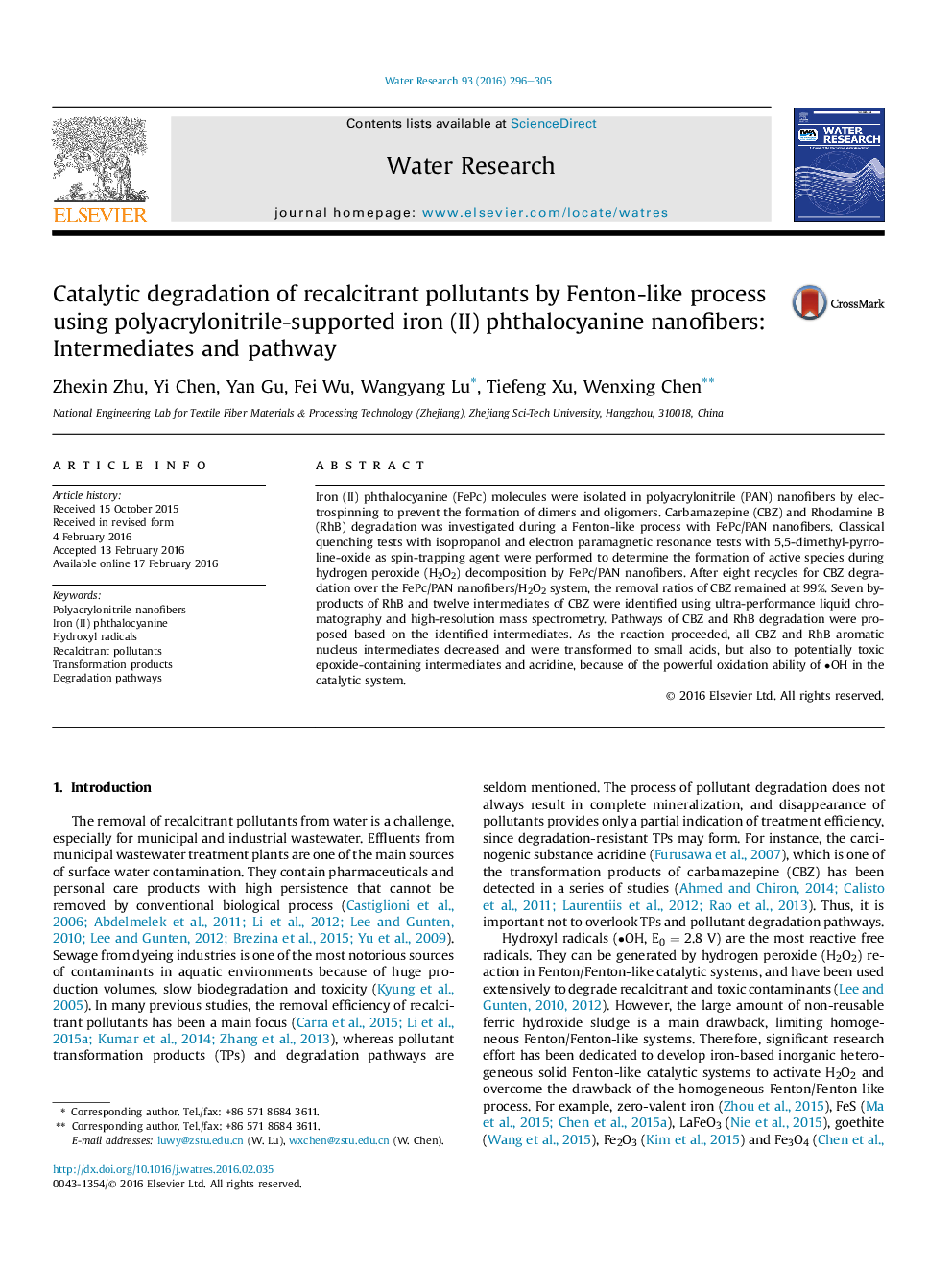| Article ID | Journal | Published Year | Pages | File Type |
|---|---|---|---|---|
| 4480959 | Water Research | 2016 | 10 Pages |
•FePc/PAN nanofiber catalysts were prepared by electrospinning method.•FePc molecules were isolated in PAN nanofibers to prevent the formation of dimers.•FePc/PAN nanofibers are efficient and stable for recalcitrant pollutant degradation.•The pathways of CBZ and RhB degradation were proposed.•Transformation products of CBZ and RhB were finally transformed to small acids.
Iron (II) phthalocyanine (FePc) molecules were isolated in polyacrylonitrile (PAN) nanofibers by electrospinning to prevent the formation of dimers and oligomers. Carbamazepine (CBZ) and Rhodamine B (RhB) degradation was investigated during a Fenton-like process with FePc/PAN nanofibers. Classical quenching tests with isopropanol and electron paramagnetic resonance tests with 5,5-dimethyl-pyrroline-oxide as spin-trapping agent were performed to determine the formation of active species during hydrogen peroxide (H2O2) decomposition by FePc/PAN nanofibers. After eight recycles for CBZ degradation over the FePc/PAN nanofibers/H2O2 system, the removal ratios of CBZ remained at 99%. Seven by-products of RhB and twelve intermediates of CBZ were identified using ultra-performance liquid chromatography and high-resolution mass spectrometry. Pathways of CBZ and RhB degradation were proposed based on the identified intermediates. As the reaction proceeded, all CBZ and RhB aromatic nucleus intermediates decreased and were transformed to small acids, but also to potentially toxic epoxide-containing intermediates and acridine, because of the powerful oxidation ability of •OH in the catalytic system.
Graphical abstractFigure optionsDownload full-size imageDownload high-quality image (187 K)Download as PowerPoint slide
